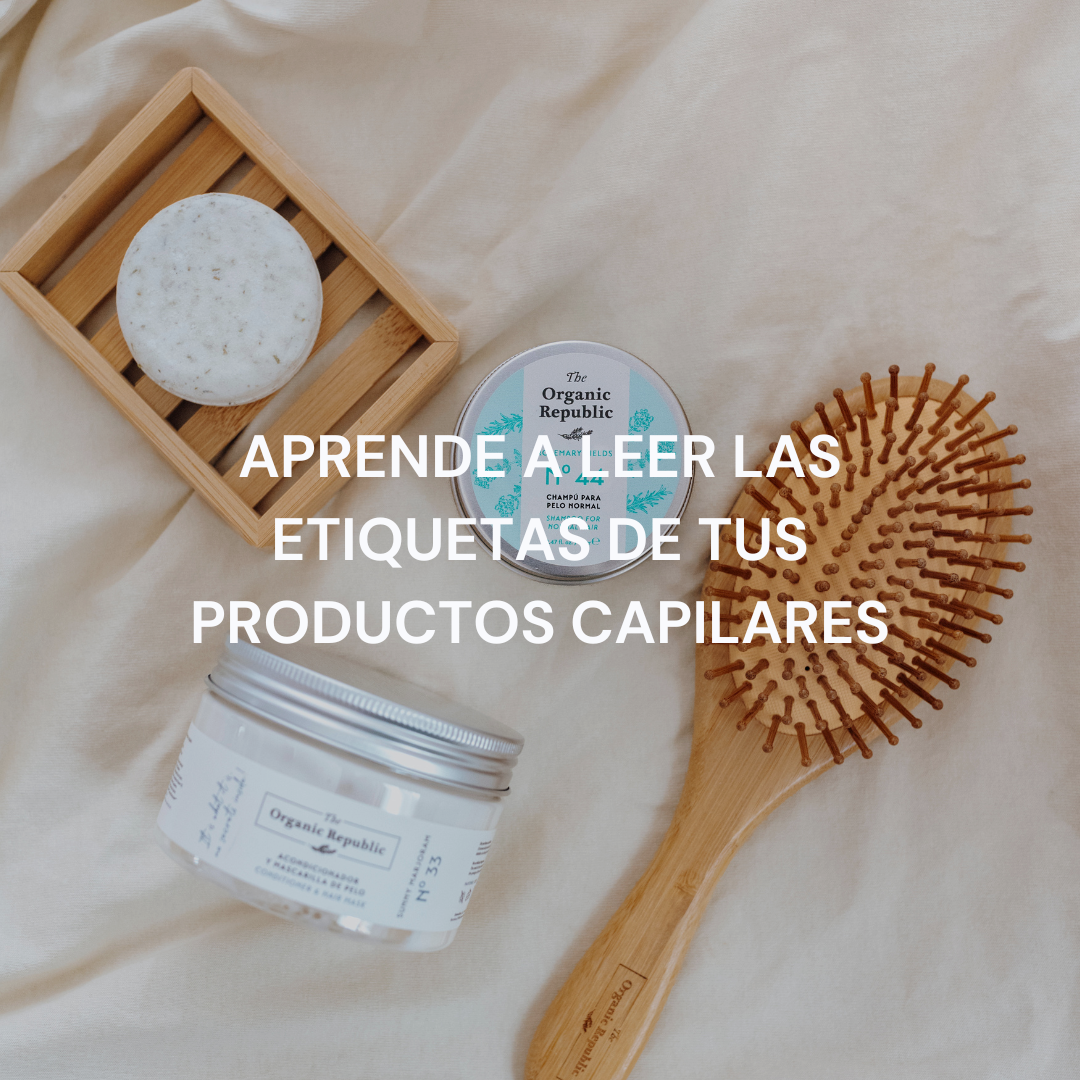
Is your shampoo good or bad for you? Learn to read your shampoo labels.
Compartir
Choosing a shampoo should be as easy as knowing your hair type. But when you're faced with a long list of ingredients, full of chemical names and miracle promises, it's normal to feel confused. Are you really using a shampoo that cares for your hair? Or are you unknowingly damaging it?
At The Organic Republic, we believe that understanding what you put in your hair is just as important as knowing what you eat. That's why, today we're teaching you how to read your shampoo label so you can make more conscious and healthy choices for yourself... and the planet.
🧪 Ingredients you should avoid in your shampoo
Most commercial shampoos contain ingredients that, while they perform a technical function (cleansing, lathering, preserving), are not at all kind to your scalp or the environment.
Here are the most common ones:
❌ Sulfates (Sodium Lauryl Sulfate, Sodium Laureth Sulfate, etc.)
They're harsh detergents that strip away grease... but they also strip away the natural oils that protect your hair. The result: split ends, dry or irritated scalp, and, in many cases, increased hair loss.
❌ Silicones (Dimethicone, Cyclopentasiloxane, etc.)
They give hair that instant "shine" and softness, but it's a superficial cosmetic effect. Silicones don't nourish, but rather form a layer that prevents good ingredients from penetrating. In the long run, your hair looks dull, heavy, and reliant on more products.
❌ Parabens (Methylparaben, Propylparaben, etc.)
These are synthetic preservatives associated with possible hormonal changes and allergies. They are not necessary in a well-made formula with natural alternatives.
❌ Artificial fragrances and colorants
They can irritate sensitive scalps and offer no real benefits. In fact, if you see a fuchsia or electric blue shampoo... be suspicious.
🌿 Ingredients that your hair does need
A good natural shampoo focuses on nourishing, strengthening, and balancing. Here are some ingredients you should look for:
✅ Aloe vera
Deeply hydrates, soothes irritations, and helps balance the scalp's pH. It's ideal for dry, sensitive, or hair prone to hair loss.
✅ Vegetable oils (jojoba, argan, coconut, olive)
Rich in antioxidants, fatty acids, and vitamin E. They help nourish the hair follicle, reduce frizz, and restore natural shine.
✅ Botanical extracts such as rosemary, lavender, or nettle
Rosemary activates scalp circulation and stimulates hair growth. Nettle combats dandruff and hair loss. And lavender provides balance and calm.
✅ Mild surfactants derived from coconut
They cleanse without harsh or drying. They don't foam as much as sulfates, but they clean just as well and are gentle on your skin.
🧴 Less is more: a clean, no-frills formula
When you read a label, keep in mind that if you have to Google half the ingredients, that product probably isn't as natural as it claims to be.
A good hair formula doesn't need twenty ingredients. It needs the right ones.
At The Organic Republic , for example, our formulas are carefully selected to provide real hair health. And it shows: less irritation, more shine, more balance.
💡 How to start making the change?
-
Check the INCI of your current shampoo . If you see the ingredients mentioned above, you know what's going on.
-
Start with a hair detox . When you stop using silicones and sulfates, your hair may go through an adjustment period. This is completely normal.
-
Give your hair time . The switch to natural cosmetics is gradual, but once your hair rebalances, there's no turning back.
-
Look for transparency in brands . If you can't understand what's on the label, or if they don't explain what's in their formula, it's probably not a good fit.
Ready to make the switch to more conscious hair care?
Start with shampoo, follow with the mask, and be amazed by everything your hair can recover when you give it what it really needs.




